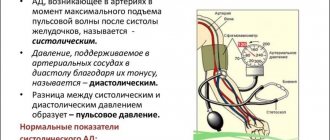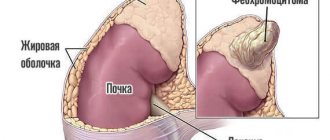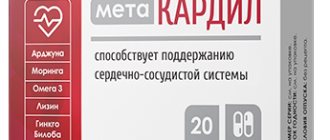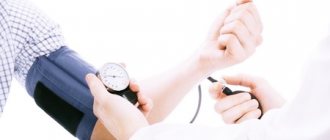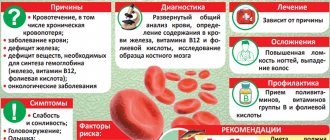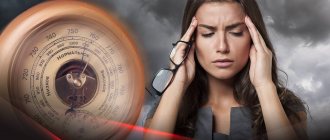People diagnosed with VSD react sharply to any changes, including suffering from the change of seasons. After a stable summer, the emotional state worsens; a person feels the symptoms of autumn aggravation with a vengeance. A noticeable decrease in mood and deterioration in well-being can be observed in the fall not only in dystonics, but also in completely healthy people. It’s not for nothing that there is such a thing as the autumn blues. How does vegetative-vascular dystonia manifest in autumn? What to do in case of seasonal exacerbation, how to stabilize the condition? We will answer important questions.
general information
The term “vegetative-vascular dystonia” is currently not included in the International Classification of Diseases. Instead, the diagnosis “somatoform autonomic dysfunction of the nervous system” is used. In addition, a number of individual manifestations are classified as independent diseases. In our country, the old terminology is more often used.
The autonomic nervous system (ANS) is responsible for regulating the basic processes occurring inside the human body. Vital functions are under its control:
- breath;
- heart rate;
- tone of blood vessels and hollow organs;
- secretion of saliva, sweat, hormones;
- digestion of food;
- liver and kidney function, etc.
A person cannot control the functioning of the autonomic nervous system, which is why it is also called the autonomic nervous system. The functioning of various departments is regulated by a complex feedback system and also depends on the level of hormones. Failures in this mechanism lead to disruptions in the functioning of internal organs.
Make an appointment
What will not help with the diagnosis of VSD
Very often, after vegetative-vascular dystonia is diagnosed, the local therapist sends the patient to drink vitamins, nootropics, nicotinic acid and motherwort. But there are two dangers in this:
- The patient was not properly examined, and the real disease remained in the shadow of the symptoms of VSD.
- Vitamins, nootropics and mild sedatives often work as a placebo, relieving symptoms only for a while - 1-3 months, after which everything returns to normal.
Causes
Malfunctions of the ANS can be caused by various diseases and conditions. The list of the most common causes of vegetative-vascular dystonia includes:
- endocrine diseases (diabetes mellitus, hypo- or hyperfunction of the thyroid gland, etc.);
- significant hormonal changes in the body (during puberty, menopause or pregnancy);
- injuries to the brain or spinal cord (even one mild concussion can be enough to develop disruptions in the functioning of the nervous system);
- osteochondrosis of the cervical spine;
- encephalopathy of various origins;
- chronic diseases of the cardiovascular system, gastrointestinal tract;
- physical or mental fatigue;
- chronic lack of sleep;
- one-time severe stress or chronic tension of the nervous system;
- alcohol or drug abuse, smoking;
- mental illness;
- increased anxiety, hypochondria;
- use of certain medications (oral contraceptives, bronchodilators, medications based on caffeine and ephedrine);
- acute and chronic infections of the brain, kidneys, respiratory system;
- hereditary predisposition.
Changes in climate or time zones, and frequent business trips can also provoke the manifestation of VSD. Statistics show that women suffer from the disease three times more often than men. Adolescents are also at risk.
Predisposing factors for the development of VSD (vegetative-vascular dystonia)
Predisposing factors contributing to the occurrence of the disease (syndrome) of VSD are diseases of the nervous system, hereditary and constitutional predisposition; periods of hormonal changes in the body (pre- and puberty, pregnancy, childbirth, dysvariant disorders); personality traits of the patient (anxious, hysterical, suspicious, accentuated personalities); physical inactivity from childhood; focal infection; osteochondrosis; diseases of internal organs; endocrine diseases; allergic diseases.
Symptoms
The symptoms of vegetative-vascular dystonia are varied, since the ANS is responsible for the functioning of all organs and structures of the human body. All manifestations of the disease can be divided into several groups:
- respiratory (respiratory): rapid breathing, subjective feeling of lack of air, inability to take a deep breath, aggravated by stress;
- cardiac (cardiac): frequent or rare pulse, interruptions (feeling of freezing) in the work of the heart, pain and a feeling of squeezing in the sternum or in the left half of the chest;
- thermoregulatory: an increase in temperature not associated with any infectious disease or inflammatory process; usually goes away on its own;
- dysdynamic: a sharp increase or decrease in blood pressure, accompanied by corresponding symptoms: headache, dizziness, flashing spots before the eyes, fainting, etc.;
- psychoneurological: increased sensitivity to changes in atmospheric pressure and temperature (meteosensitivity), drowsiness during the day and insomnia at night, apathy, irritability, causeless anxiety, fatigue;
- gastrointestinal: constipation, diarrhea or their alternation, pain and heaviness in the stomach, heartburn, increased gas formation in the intestines;
- sexual: decreased sexual desire, lack of arousal, inability to achieve orgasm, impotence in men.
The disease can cause both individual symptoms and various combinations of them. This makes it much more difficult to diagnose.
Kinds
Depending on the predominant syndrome (complex of symptoms), vegetative-vascular dystonia is divided into the following types:
- hypertensive: accompanied by a short-term increase in blood pressure (within 140 mmHg), headache, rapid heartbeat;
- hypotonic: blood pressure is constantly low or decreases sporadically, which is often accompanied by severe dizziness, darkening of the eyes or fainting; patients also complain of excessive fatigue, frequent headaches and a feeling of aches throughout the body;
- cardiac: manifests itself as an increased, decreased or uneven pulse, chest pain, as well as attacks of shortness of breath, in which the patient experiences a strong feeling of lack of air;
- vagotonic: a person, first of all, complains of breathing problems: the inability to take a full breath, a feeling of tightness in the chest; the condition is accompanied by strong salivation;
- mixed: a combination of different symptoms or their alternation.
Depending on the severity, there are three types of VSD:
- mild: a person experiences symptoms rarely, they do not disrupt his lifestyle or reduce his ability to work; there are no crises;
- moderate severity: symptoms are clearly expressed and interfere with normal life activities; periodically a person may experience crises during which his ability to work decreases;
- severe: manifestations of the disease are observed almost constantly, the person cannot work normally, and is often on sick leave; vegetative crises are repeated very often.
Summer dystonic crisis
This time of year is the most favorable for people suffering from VSD. However, abnormal heat can cause aggravation, causing difficulty breathing and headaches. In the heat, dizziness, fainting, nausea and vomiting may occur. In summer it is important to drink a lot and stay out of the sun.
An exacerbation is manifested by the following symptoms:
- weight loss;
- labored breathing;
- lack of appetite;
- pain in the forehead;
- fainting and dizziness.
Complications
The most common complication of VSD is vegetative crisis. This is a sudden attack during which a massive disruption of the autonomic nervous system occurs. Depending on the type of violation, there are three types of crises.
- Sympathoadrenal. Accompanied by a massive release of adrenaline into the blood, an increase in blood pressure, pulse and body temperature. The skin turns pale, hands and feet become cold and numb. The person experiences severe chills, unexplained anxiety, and fear of death. The condition is also often called a panic attack.
- Vagoinsular. The patient feels hot and suffocated, his face turns red, and severe sweating appears. Blood pressure decreases, pulse becomes rare. Often the condition is accompanied by frequent loose stools.
- Mixed. The crisis manifests itself with mixed symptoms.
If the symptoms of VSD are ignored for a long time and there is no treatment, the pathology can cause the development of:
- persistent arterial hypertension, poorly corrected by medications;
- cardiomyopathy;
- diabetes mellitus type 2;
- cholelithiasis or urolithiasis;
- stroke;
- myocardial infarction.
Excessive excitability of the autonomic nervous system also causes a decrease in immunity.
Vegetative-vascular dystonia in adolescents and children
The disorder can occur already in early childhood, which is important to take into account for parents who send their child to kindergarten or notice changes in the teenager’s behavior. The first symptoms may appear when the child goes to kindergarten or finds himself in a stressful situation.
“There are times when a child feels uncomfortable in kindergarten,” explains neurologist Olesya Bryukhanova. “And as a defensive reaction, his temperature rises or vomits. These symptoms develop only in kindergarten, while at home the child feels well and has no signs of acute respiratory viral infection or intestinal disorder.”
Temperature during VSD is not the only sign of a child’s disturbed condition. Such children, as a rule, are capricious, do not want to go to kindergarten, often get sick and often come into conflict with other children. They have noticeable mood swings, and they tolerate any stress, be it physical or intellectual, worse than their peers.
In adolescence, hormones come into play, the need for self-affirmation in a team, and constant comparisons of oneself with others. When these comparisons are not in your favor or conflicts regularly arise with peers and parents, the load on the nervous system increases. The psyche becomes unstable, which is manifested in girls’ behavior by tearfulness, nervousness, and rudeness towards parents and teachers. In boys, there are outbursts of anger and pronounced negativity towards everything that surrounds the teenager. And if a teenager cannot show aggression openly, another extreme occurs - panic attacks, which are no less difficult to experience.
This behavior is often attributed to hormonal surges and age-related characteristics. But it's important to understand that hormonal changes don't have to manifest themselves this way. Moreover, they are more likely to create the ground for the development of the disorder, and the parents’ task is to see the problem in time. If a teenager has become emotionally unstable, his behavior has changed, he blushes and turns pale easily, experiences hot flashes and sweats a lot, and has blood pressure surges, you cannot expect this to go away on its own. In this case, characteristic symptoms of a nervous system disorder appear, which can and must be stopped at the very beginning of development.
“In my practice, there was a case when a 17-year-old boy suffered from high blood pressure,” comments neurologist Olesya Bryukhanova. “He was registered with a cardiologist, but the cause of arterial hypertension remained unclear for a long time. In the process of communicating with the patient, it became clear that he felt anger towards his parents. And since he had to constantly restrain his emotions and endure this internal conflict, he developed a syndrome. When we eliminated the psychological problem, both the blood pressure and the patient’s well-being returned to normal.”
Diagnostics
Diagnosis of vegetative-vascular dystonia requires, first of all, the exclusion of another, more serious pathology with similar symptoms. The examination includes:
- interviewing the patient, collecting anamnesis to identify specific complaints, their strength, circumstances of occurrence, etc.; hereditary factors and previous diseases are also taken into account;
- examination: breathing and pulse rates are checked, an orthostatic test is performed (measurement of the heart rate first while lying down, and then 1-2 minutes after moving to a vertical position), dermographism is assessed (the color of the strip on the skin after holding the handle of a neurological hammer, indicating the activity of the or another part of the autonomic nervous system);
- laboratory diagnostics: general and biochemical blood tests, assessment of hormone levels, indicators of inflammation and autoimmune processes);
- ECG and ultrasound of the heart to exclude cardiac pathology;
- chest X-ray and respiratory function testing (spirometry), to exclude diseases of the respiratory system;
- rheoencephalography: assessment of the tone of cerebral vessels, the elasticity of their walls;
- Doppler ultrasound of the vessels of the neck and brain to assess the quality of blood flow in them;
- X-ray of the sella turcica, MRI of the brain to exclude tumors and other pathologies;
- electroencephalography (EEG): evaluates bioelectrical impulses in the brain and helps exclude epilepsy.
The patient must be examined by a therapist, neurologist and cardiologist. If necessary, consultations with other specialists are added, for example, a gynecologist, gastroenterologist, endocrinologist, psychiatrist.
Make an appointment
Treatment
Treatment of vegetative-vascular dystonia requires an integrated approach. The doctor is required to minimize the number of attacks, reduce their strength and duration. A combination of several techniques is used:
- drug treatment;
- acupuncture, as the most effective for stabilizing the autonomic nervous system
- physiotherapy, exercise therapy, massage;
- Spa treatment;
- psychotherapy if necessary.
Drug treatment is aimed at stabilizing the functioning of the autonomic nervous system, improving blood circulation and metabolism. Depending on the clinical situation, the following may be prescribed:
- sedatives of varying strength from herbal to prescription: improve the quality of night's rest, reduce stress and anxiety;
- antidepressants: help eliminate excessive anxiety, irritability, apathy; help stabilize the heart, reduce headaches and muscle pain;
- tranquilizers: necessary for severe panic attacks, unreasonable fears, high anxiety;
- nootropic drugs: improve metabolism and blood circulation in neurons of the brain and spinal cord, increase resistance to stress;
- adrenergic blockers and other antihypertensive drugs: used symptomatically for increased blood pressure and rapid pulse;
- B vitamins: improve the conduction of nerve impulses and have a beneficial effect on the state of the nervous system.
Physiotherapeutic techniques help improve blood circulation and oxygen supply to tissues. Some procedures, on the contrary, have a relaxing effect and increase resistance to stress. The patient is prescribed:
- laser therapy;
- magnetic therapy;
- electrophoresis;
- electrosleep, etc.
If necessary, drug treatment and physiotherapy are supplemented with a general strengthening complex of physical therapy, massage, and acupuncture. Psychotherapy is aimed at reducing general anxiety, stabilizing the condition, and working through internal blocks and fears.
Sanatorium-resort treatment is used outside the period of exacerbation. Patients are prescribed general restorative procedures: mud therapy, mineral water baths, etc. It is necessary to choose resorts in a similar climatic zone so that the trip does not cause an exacerbation of the condition.
Winter crisis
Why does VSD worsen during the cold season? This is due to the fact that short daylight hours additionally deplete the human nervous system. During this period, patients experience melancholy, futility of existence and hopelessness. Prolonged depression leads to the patient losing his sense of reality. Due to the cold weather, people spend less time outside, which causes a shortage of fresh air.
Symptoms of exacerbation of dystonia in winter:
- bouts of despondency;
- choking, difficulty breathing;
- sudden panic attacks;
- tachycardia;
- leg cramps;
- hot flashes, sweating.
Prevention
Preventive measures for vegetative-vascular dystonia help increase the body's resistance to stress and strengthen the immune system. They are used not only to prevent the disease, but also as an addition to the main therapy. Doctors recommend:
- normalize the work and rest schedule, prevent overtime;
- eliminate psycho-emotional irritants as much as possible, ensure a comfortable psychological atmosphere at home;
- sleep at least 8 hours every day;
- regularly walk in the fresh air (at least 1 hour a day);
- engage in amateur sports to strengthen the body: aerobic exercise (biking, race walking) and swimming have a good effect.
Proper nutrition is also important. Recommended:
- create a diet in accordance with the principles of a healthy diet with sufficient amounts of proteins, fats, carbohydrates and microelements;
- do not exceed the daily calorie intake corresponding to age, gender and lifestyle;
- drink at least 1.5-2 liters of clean water per day;
- regularly choose foods containing large amounts of magnesium and potassium (avocado, dried apricots, bananas, almonds, broccoli, peas, spinach); they help normalize the functioning of the cardiovascular system;
- minimize the consumption of black tea, coffee, spicy, fatty, smoked foods;
- exclude alcohol.
Treatment at the Energy of Health clinic
Doctors at the Health Energy clinic choose an integrated approach to the treatment of vegetative-vascular dystonia. After a thorough diagnosis and exclusion of other pathologies, combination therapy will be prescribed, including:
- modern medications if necessary (the choice depends on the severity of symptoms);
- physiotherapy, massage and physical therapy to strengthen the body in general and the nervous system in particular;
- acupuncture, manual therapy if indicated.
We will certainly discuss your lifestyle, tell you about ways to correct it, and help you create the right diet. Regular monitoring by our doctors will help keep the disease under control.
Advantages of the clinic
The Health Energy Clinic offers each patient the highest quality medical services at an affordable price. By contacting us, you will receive:
- consultations with experienced doctors of various profiles;
- full diagnostics to identify obvious and hidden pathologies;
- a modern and effective complex treatment scheme, selected in accordance with the characteristics of your body.
Our clinic has its own day hospital, where you can undergo various therapeutic and diagnostic procedures in accordance with the doctor’s prescription. Convenient parking and location next to the metro allows you to get to us with maximum comfort.
Vegetative-vascular dystonia can be a serious problem that interferes with a full life. Do not submit to the disease, sign up for the Energy of Health clinic.
Diseases that are hidden under the diagnosis of VSD
What conclusions can be drawn from the previous block of the article?
Conclusion No. 1.
If you find yourself with the above symptoms, do not panic and consult a doctor in a timely manner. Because the disease will not disappear on its own, and you need to understand the reasons.
Conclusion No. 2.
Vegetative-vascular dystonia is a pseudo-diagnosis that hides a number of real diseases, which very often remain without proper treatment. Most often these are mental, neurological, endocrinological and cardiac disorders, which include:
- Anxiety and panic disorder
- Hypochondriacal disorder (this is worth paying attention to for patients who have been visiting doctors for years, taking tests and undergoing procedures that do not reveal any somatic diseases)
- Depression
- Migraine
- Hypo- and hyperthyroidism
- Hypertension
- Irritable bowel syndrome
- Cardiac ischemia
- Fibromyalgia (chronic pain syndrome)
- Asthma
